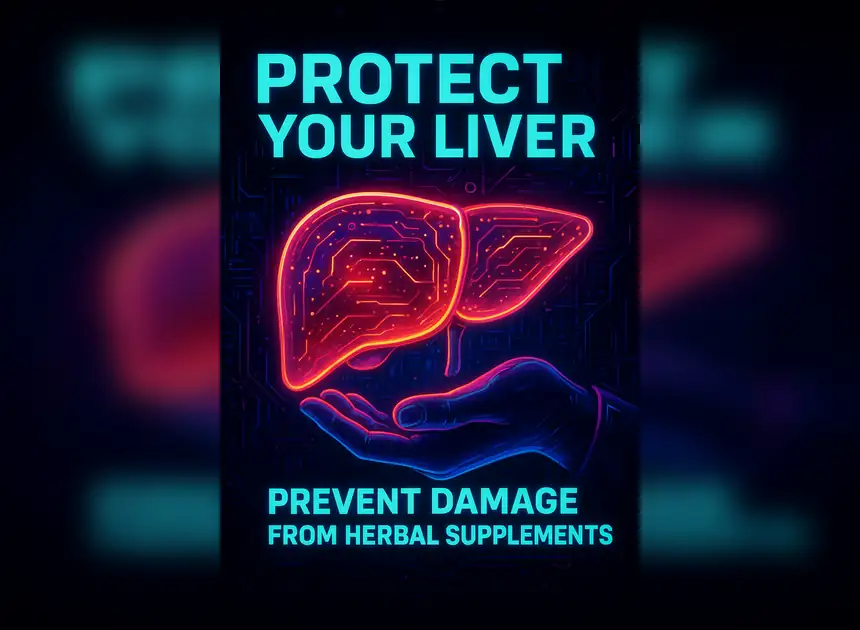
PCOS Causes, Weight Gain, and the Best Way to Lose Weight
Struggling with PCOS weight gain and irregular periods? Discover science-backed lifestyle changes—low-GI meals, exercise, stress and sleep management—to balance hormones, restore cycles, and support fertility. Learn how to achieve sustainable PCOS weight loss and healthier ovaries
Struggling with PCOS weight gain and irregular cycles?
Understand why PCOS causes hormonal and metabolic shifts that block ovulation and store fat.
Learn research-backed, non-drug steps — timed low-GI meals, resistance + aerobic training, sleep and stress control — to drive
In some cases, women may notice early improvements in PCOS weight loss and menstrual cycle regularity within the first month. However, lasting results depend on consistent lifestyle and dietary changes. These strategies not only support healthy ovaries but also help restore a PCOS regular period. With steady application, they may promote measurable PCOS weight loss in 1 month and improve the chances of getting pregnant with irregular periods.
Note: all information above is supported by peer-reviewed scientific research and the latest clinical studies. Consult your doctor for personalised advice and reassurance.
Key Causes / Mechanisms of PCOS
The main scientific causes of PCOS in girls and women: genetic predisposition, neuroendocrine dysfunction, hyperandrogenism, insulin resistance, follicular/ovarian dysfunction, lifestyle/environmental factors, and chronic low-grade inflammation.
- Genetic predisposition / polygenic risk
- Neuroendocrine dysfunction
- Abnormal pulsatile secretion of GnRH (gonadotropin releasing hormone) → increases LH (luteinizing hormone) relative to FSH (follicle stimulating hormone). ↑ LH stimulates ovarian theca cells to produce more androgens. [3]
- Reduced negative feedback from sex steroids (estrogen/progesterone) to hypothalamus/pituitary contributes to this dysregulation. [4]
- Hyperandrogenism (high androgen levels) [5, 4]
- Hyperandrogenism: the body makes too much of the “male” hormones women normally have in small amounts.
- Source. Mostly the ovaries (theca cells). The adrenal glands can add some.
- Triggers. High LH from the brain or high insulin in the blood make theca cells produce more androgens.
- Effect on eggs. Extra androgens stop small follicles from maturing so ovulation may not happen.
- Visible signs. More facial/body hair, acne, and thinning scalp hair.
- Short chain. High LH or insulin → more ovarian androgens → follicles stop → irregular or no periods.
- Insulin resistance / hyperinsulinemia
- Many people with PCOS have cells that respond less well to insulin. Body compensates by producing more insulin. High insulin increases androgen production in ovaries and reduces sex hormone binding globulin (SHBG), increasing free androgen levels. [5]
- Obesity (especially central or visceral fat) worsens insulin resistance. [5]
- Follicular and ovarian dysfunction
- Normal follicle maturation is disrupted. Many small follicles begin development but do not mature (arrested at small antral follicle stage). Ovulation is impaired (oligo- or anovulation). [5]
- Elevated Anti-Müllerian Hormone (AMH) from small follicles; high AMH may further inhibit follicular response to FSH, worsening follicular arrest. [2]
- Environmental and lifestyle factors
- Diet, obesity, lack of physical activity contribute. These worsen insulin resistance and metabolic disturbances. [2]
- Prenatal environment: exposure in utero (maternal hyperandrogenism, altered AMH) might program risk in female fetus. [4]
- Epigenetic modifications (changes in gene expression not due to DNA sequence changes) possibly triggered by environment, diet, toxins. [4]
- Chronic inflammation & metabolic co-factors
Best Diet and Lifestyle Changes for PCOS Weight Loss and Healthy Ovaries
Diet-Changes
- Increase fiber intake through well-tolerated sources such as vegetables, berries, and whole grains. Legumes (beans, lentils) can be added if well-digested, since some women with PCOS have digestive issues or follow a low-FODMAP diet. Consistency is more important than quantity, as steady habits support PCOS weight loss, protect healthy ovaries, reduce PCOS weight gain, and help restore a PCOS regular period.
- Use a low-glycemic index/load diet: choose whole grains, legumes, non-starchy vegetables. Helps reduce blood sugar spikes and insulin resistance. [6]
- Increase fiber intake: beans, lentils, berries, leafy greens. Fiber helps improve insulin sensitivity. [7]
- Eat enough lean protein: fish, poultry, plant-based sources. Protein stabilizes blood sugar, reduces hunger. [8]
- Healthy fats: include omega-3 rich foods (fatty fish, walnuts, flaxseeds) and monounsaturated fats (olive oil). Limits inflammation. [9]
- Anti-inflammatory foods and antioxidants: fruits, vegetables, herbs. Reduce oxidative stress/inflammation linked to PCOS symptoms. [10]
- Diabetes-style or Mediterranean-type diets: moderate-carb, calorie-controlled but nutrient-dense. [11]
- Distribute carbohydrates throughout the day rather than in big spikes. Regular meals/snacks to avoid large glucose/insulin swings. [12]
Lifestyle / Behavior Changes
- Exercise regularly: combinations of aerobic (walking, cycling, swimming) and resistance (strength training) exercise. Aim 150-300 minutes/week moderate intensity, or 75-150 minutes vigorous, plus muscle-strengthening 2 days/week. [10]
- Reduce sedentary behavior: less sitting, more moving throughout the day. [13]
- Weight loss even modest (5-10 %) helps improve menstrual regularity, insulin resistance, androgen levels.[14]
- Behavioral support / education: counseling for eating behaviors, stress, sleep hygiene. Helps adherence and psychological health.[15]
Ensure stress management: high stress worsens insulin resistance and hormonal imbalance. [16]
[Read: Overthinking Therapy: Why You Spiral—and How to Stop Today]
- Poor sleep independently worsens insulin resistance and hormonal imbalance, making sleep hygiene a core therapy in PCOS.
How PCOS Causes Weight Gain and the Best Way to Lose Weight with PCOS
Women with PCOS often struggle with PCOS weight gain because of insulin resistance: the body needs to make more insulin to control blood sugar, and high insulin promotes fat storage and increases androgen production.[17]
Research shows that losing even 5 % of body weight can improve hormone balance, restore menstrual cycles, and reduce risk of PCOS weight gain — a strong step toward PCOS weight loss and maintaining healthy ovaries. [18]
In rare cases, aggressive diet/exercise may lead to PCOS weight loss in 1 month, but sustainable change is more important — combining moderate calorie restriction, low-GI foods, and regular exercise is considered the best way to lose weight with PCOS. [11]
By reducing fat and insulin spikes, one can reduce hyperandrogenism, support follicle development, help get PCOS regular period, and improve chances of getting pregnant with irregular periods.[19]
PCOS and Menstrual Blood Colors: What They Mean
During menstruation, blood oxidizes as it lingers, darkening its color. In PCOS, irregular shedding and delayed flow make this more likely.
PCOS causes hormonal disruption → PCOS weight gain → irregular ovulation → lining stays longer → blood darkens.
Tracking those colors can hint at cycle issues and help reach PCOS weight loss, restore healthy ovaries, and promote a PCOS regular period — a step toward getting pregnant with irregular periods. [20]
- Bright red: fresh blood just expelled, little oxidation. [21]
- Dark red / brown / rusty: older blood that took longer to exit and oxidized.[22]
- Black / very dark: remains of older, highly oxidized blood, often at the start or end of the flow. [20]
- Pink: blood diluted with cervical mucus or vaginal fluid. [21]
If you see unusual colors (green, gray, orange) or smell, it’s safer to consult a healthcare provider. [23]
Managing PCOS isn’t just about weight loss — it’s about creating a long-term balance between hormones, metabolism, and lifestyle. Research makes it clear that diet, exercise, sleep, and stress management can restore cycles and support healthy ovaries. But lasting change also means knowing when to use supplements wisely, how to separate evidence from hype, and how to build a healthier mindset.
If you’d like to dive deeper, explore our guides on choosing high-quality supplements with third-party testing, understanding whether supplements really work with evidence-based science, and breaking free from overthinking patterns that sabotage progress. Together, these resources create a complete foundation for improving both your physical and mental health while navigating PCOS with confidence.
Resourses
- Polycystic ovary syndrome: pathophysiology, molecular aspects and clinical implications , pubmed
- Understanding polycystic ovary syndrome in light of associated key genes , springeropen.com
- The pathophysiology of polycystic ovary syndrome: trying to understand PCOS and its endocrinology , DOI: 10.1016/j.bpobgyn.2004.05.004, pubmed
- Polycystic ovary syndrome: pathophysiology and therapeutic opportunities , PMID: 37859784 , PMC PubMed central , PubMed
- Polycystic Ovary Syndrome , u.osu.edu
- PCOS and Lifestyle Modification , fogsi.org
- What to Know About Lifestyle Changes for PCOS , WebMD
- How to Lose Weight with PCOS: 9 Helpful Tips ,Healthline
- Best nutrition for PCOS patients wanting to lose weight , weightwatchers.com
- The Role of Lifestyle Interventions in PCOS Management: A Systematic Review , MDPI
- PCOS Diet: What to Eat to Manage Symptoms , verywellhealth.com
- Role of Lifestyle Modifications in Management of Polycystic Ovary Syndrome , iosrjournals.org
- Table 6 Current recommendations for clinical practice and research gaps identified by this review , bmcendocrdisord.biomedcentral.com
- Good clinical practice recommendations on management of infertility in patients from India with polycystic ovary syndrome , journals.lww.com
- Changes in eating behavior through lifestyle treatment in women with polycystic ovary syndrome (PCOS): a randomized controlled trial , doi: 10.1186/s40337-022-00593-y , PMC PubMed Central
- Nutrition Strategy and Life Style in Polycystic Ovary Syndrome-Narrative Review , DOI: 10.3390/nu13072452, PubMed,PMCID: PMC8308732
- Polycystic Ovary Syndrome, Insulin Resistance, and Obesity: Navigating the Pathophysiologic Labyrinth , doi: 10.1155/2014/719050 , PMC PubMed Central
- Effectiveness of Lifestyle Modification in Polycystic Ovary Syndrome Patients with Obesity: A Systematic Review and Meta-Analysis , MDPI
- Effect of Weight Loss Interventions on the Symptomatic Burden and Biomarkers of Polycystic Ovary Syndrome , acpjournals.org
- What does the color of period blood mean? , medicalnewstoday.com
- What to Know About the Color of Period Blood , WebMD
- What does the color of your period blood mean? , helloclue.com
- Period Blood Colors and What They Mean , verywellhealth.com
How we reviewed this article
Sources
Our experts continually monitor the health and wellness space, and we update articles when new information becomes available.
Current Version
October 2, 2025
Written By
Nour Hany
Edited By
KirolosReda
Medically Reviewed By
DR. Rania Elserafy
Leave a comment
Your email address will not be published. Required fields are marked *


